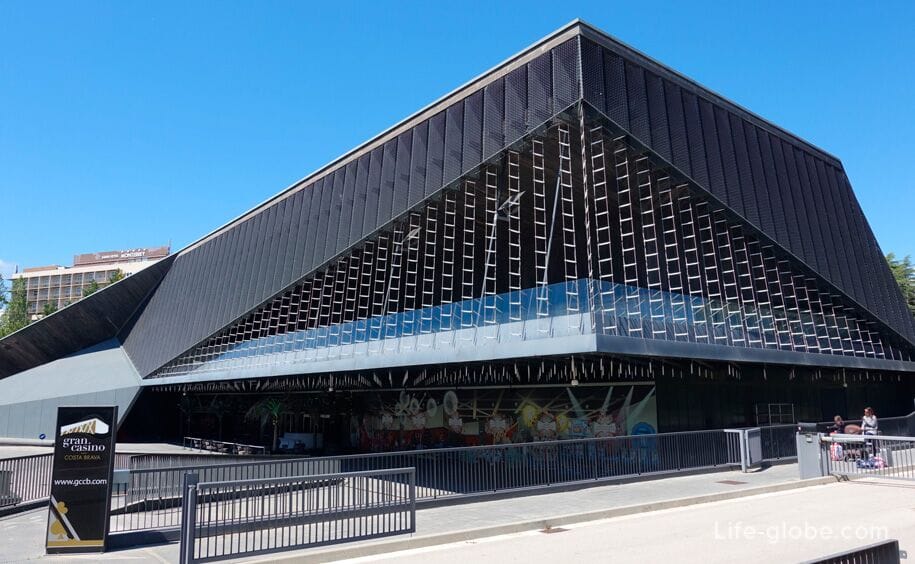
Lloret de Mar or Lloret de Mar is a city and one of the most popular resorts on Spain's Costa Brava.
Famous for Lloret de Mar as sandy beaches and rocky secluded coves, and a variety of attractions.
Castle on the beach - the building of the castle, which is a hallmark of the city and one of the main decorations of the Town.
The castle dominates the beach-Cove of Sa Caleta.
The castle building is a house built for industrialist Narcisa Plaza of Girona. The house project was designed in 1935 by architect from Girona by Isidore of Boskom. However, the work was completed only in the forties, after the end of the Spanish civil war. Read more about castle on the beach in Loert de Mar...
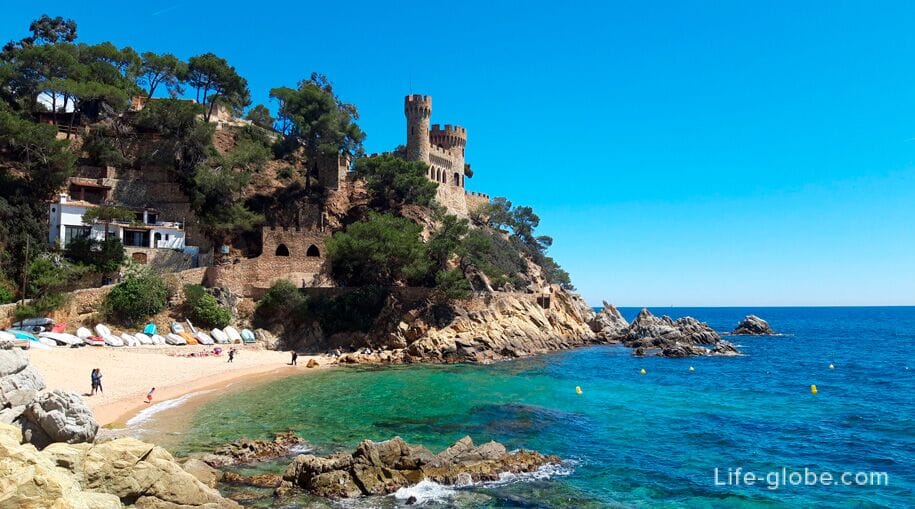
Touro Clan and the site, where once lived the Iberian settlement located just above the Chateau on the beach.
Excavations Dating back to the 3rd century BC On the hill is an Iberian house, restored using materials and construction methods of the era. In addition, the territory of the Touro Clan has panoramic views over the Bay of Lloret.
The cost of entry is € 3, reduced ticket - € 1.50.
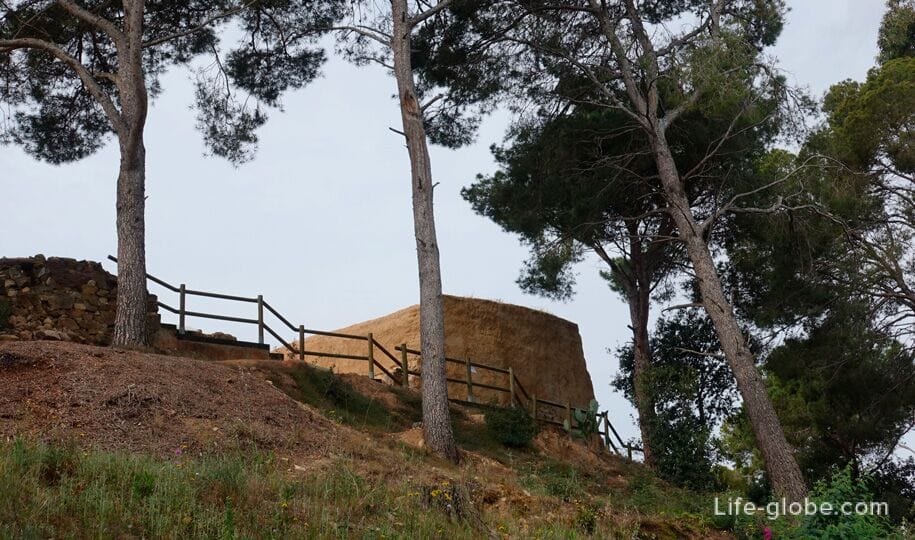
The castle of Sant Joan or the tower of St. Juan - the remains of a castle at the top of the hill separating the beaches of Lloret and Fenals beach.
The appearance of the castle of Saint John is inextricably linked with the appearance of the Town. The castle was built in the early 11th century.
In 1079, the year was consecrated the chapel of the castle, but from the original fortified in the present, preserved only the Foundation of the keep, the Eastern wall, the ruins on the southern side and several silos excavated in the rocks currently closed.
In 1805, the bombing of the tower of the English fleet, fortified the building was destroyed.
The cost of entry is € 3, reduced ticket - € 1.50.
Next to the castle is an observation deck.
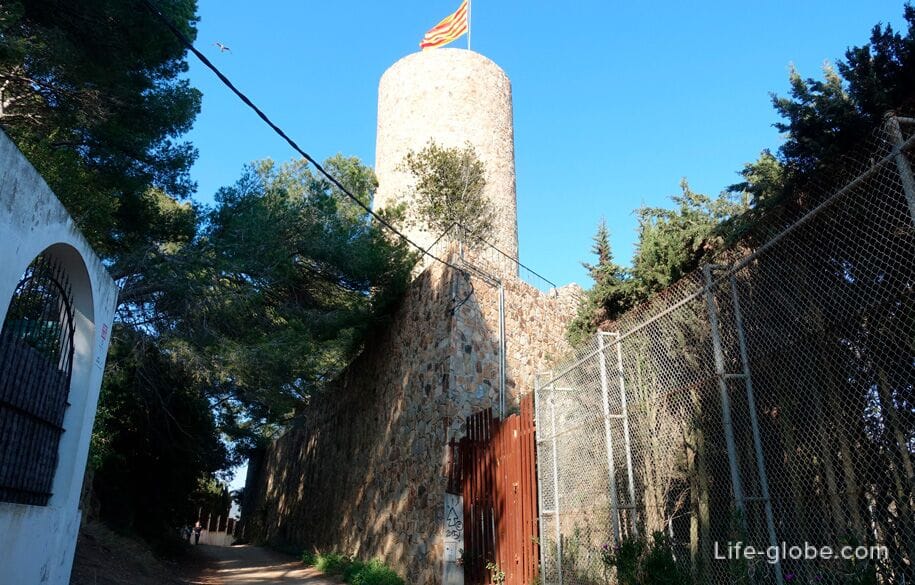
Historic Santa Clotilde gardens are located close to the beach Boadella, on the cliff, with panoramic views of the sea.
The gardens are divided according to the example of the gardens of the Italian Renaissance and is an example of a movement "noucentisme" in Catalonia, one of the most prominent representatives of which was Eugene d'or.
The entrance ticket is 5 Euro, reduced 2,50 Euro.
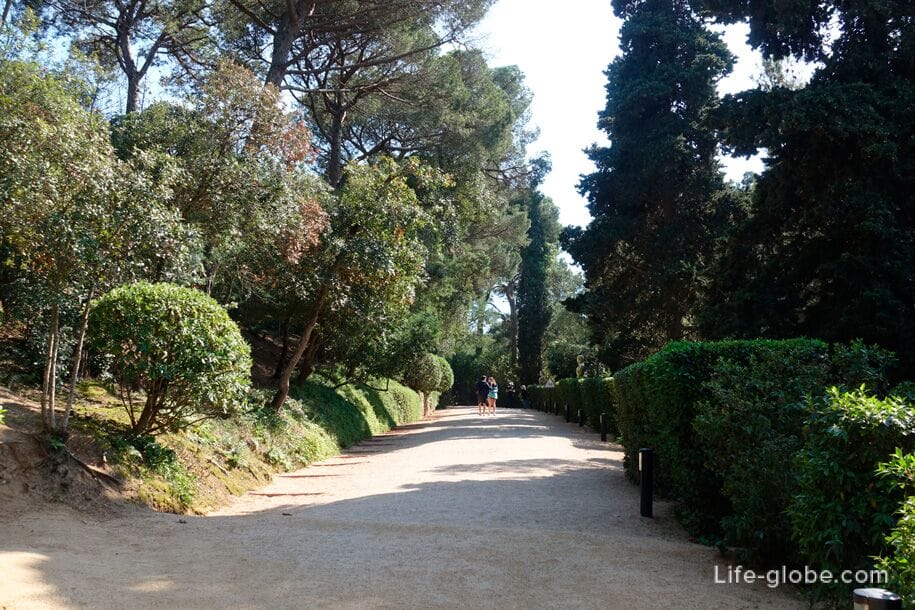
The sculpture "fisherman's Wife" (the virgin of Lloret) is the most famous and visited monument in Lloret de Mar.
The sculpture stands on a rock, near the Western end of Lloret beach.
Bronze sculpture has a height of 2.4 meters, and it represents the figure of a woman who fixed his gaze to the sea.
Near the monument is the eponymous viewpoint of the Mariner (Mirador Mujer Marinera), with panoramic views of the main beach of Lloret and the sea water. Read more about monument to don Mariner...
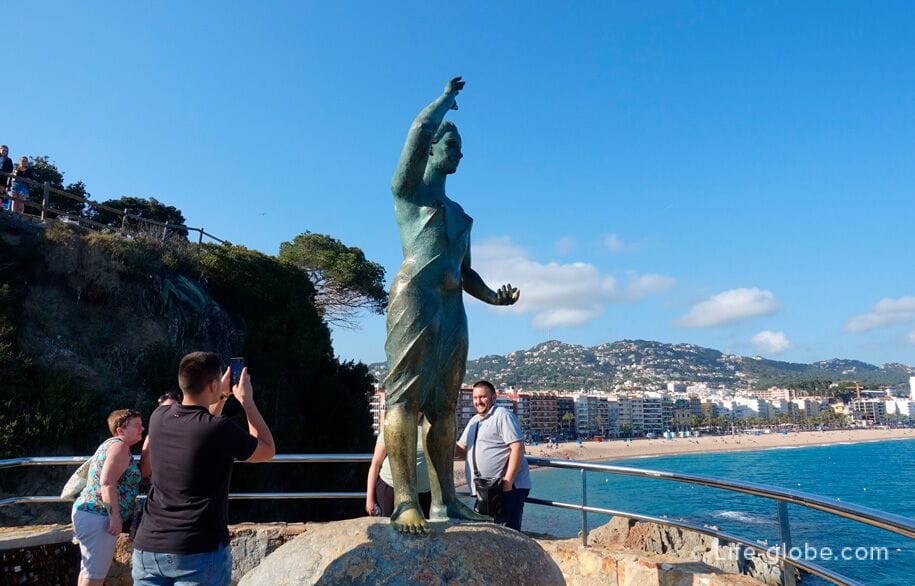
The promenade of Lloret de Mar is a long promenade, which is one of the main places for walks and recreation among the locals and guests of the city along the main Lloret beach is a small beach-Cove of Sa Caleta.
On the waterfront you can see several sculptures and monument, some of which are included in the list of attractions:
- the monument "L Esguard" (L Esguard) - a sculpture by Rosa Serra and open 15 October 2000 in honor of the international meeting of supporters clubs of FC Barcelona in Lloret de Mar;
- monument "the Sardine" (Monument a la Sardana), is made of metal sculptor Domenekom FITA from Girona;
anchor and winch with an electric drive used in the period from 1934 to 1975. Read more about the waterfront and its attractions...
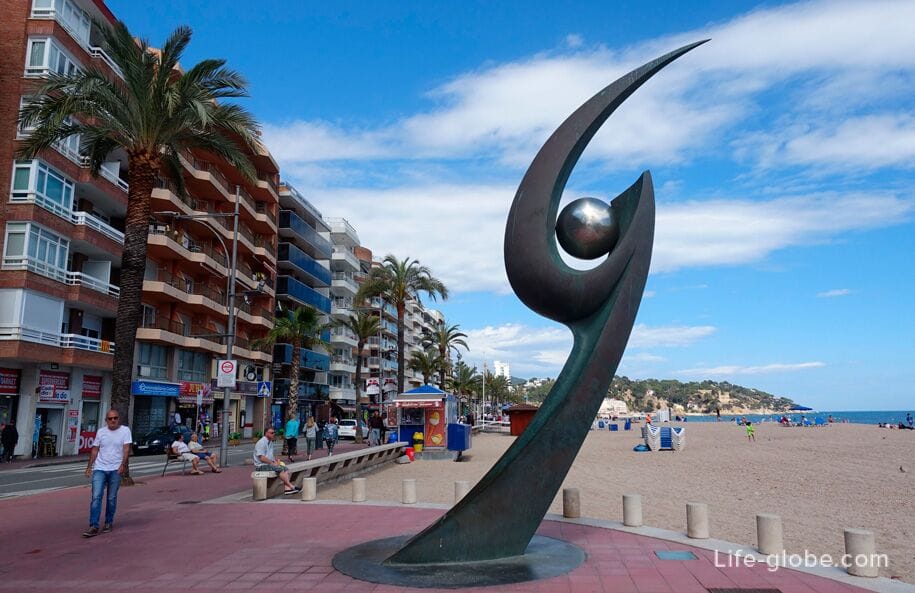
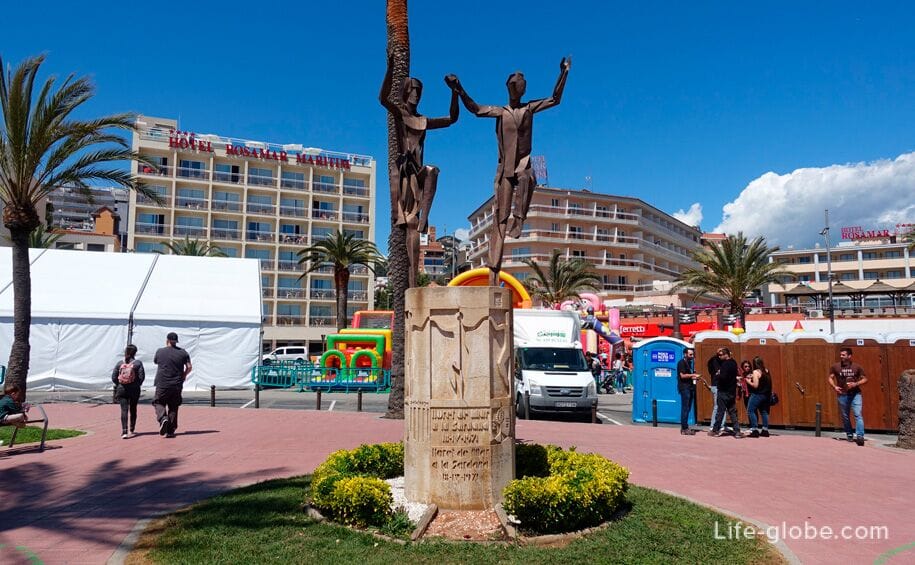
Patrol paths - paths that once were the patrol routes. The trail ran along the coast or deep into the forest.
In Lloret especially popular are the two ex-watchers of the trail, now Hiking trails, running along part of the coast of Lloret.
Trail beach Lloret - Fenals beach. This trail starts from the Western end of Lloret beach and runs along the coast, past the sculpture "fisherman's Wife", rocky Bay Bans, tower of San Juan and goes to the beach of Fenals. Further on trails and partly through the town you can walk to the centre of Blanes. Read more about watch trail...
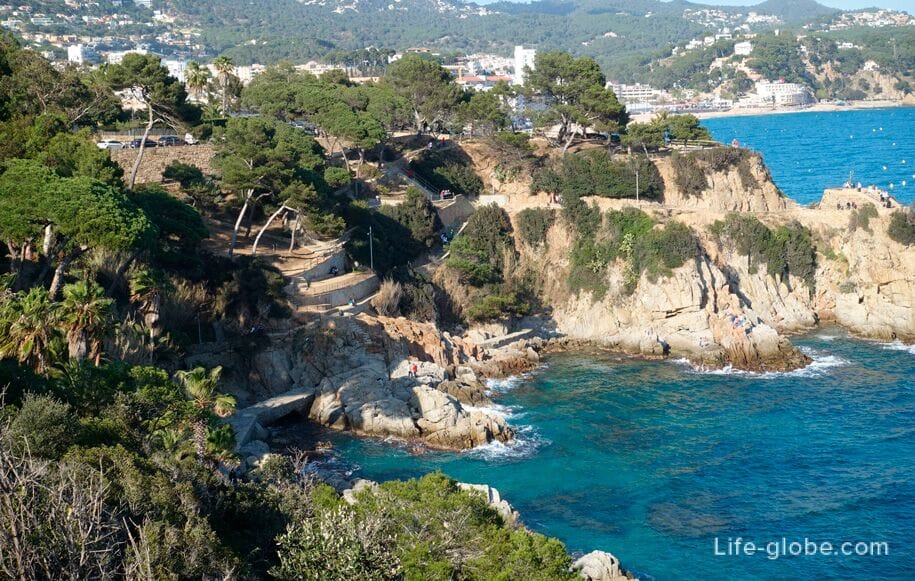
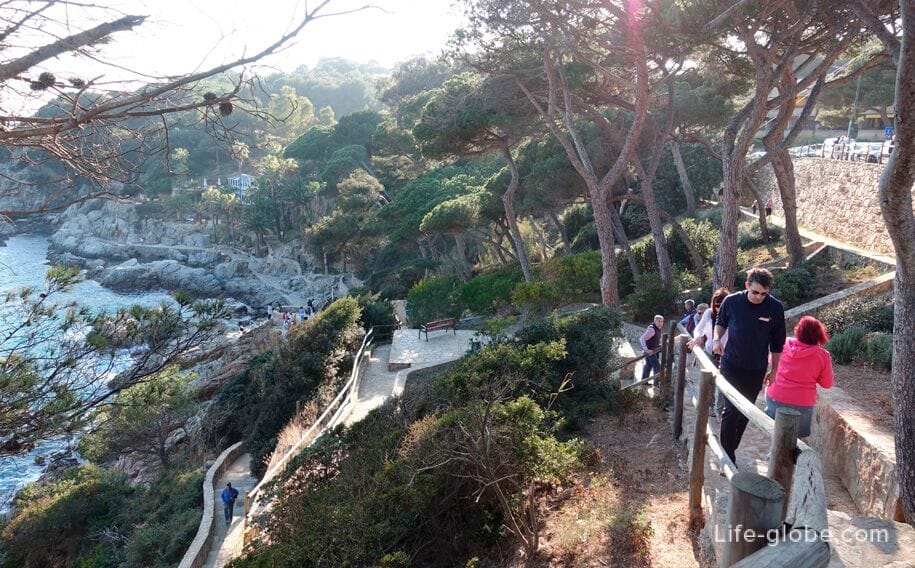
The path of the beach, Sa Caleta Cove den Trons. The trail starts from the Eastern end of the Sa Caleta beach, passes by a castle on the beach, then goes WOL rocky coast and stretches to the Bay of Trons. Next, he delves into the city, you can walk from Canyelles beach, and there, on the forest trails, walk to the center of Tossa de Mar. Read more about the trail and the route from Lloret to Tossa...

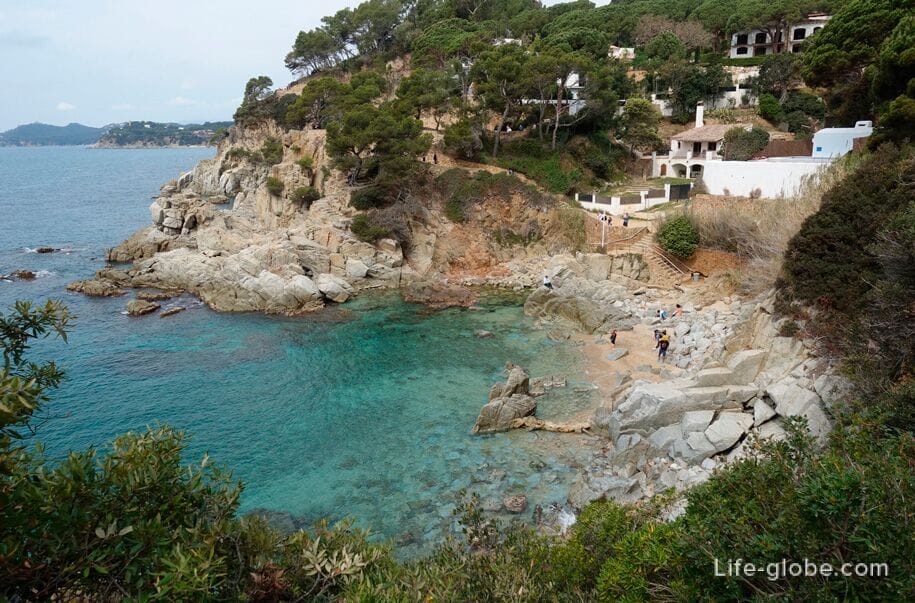
"Indianos" - the so-called examples of traces of the Indians in Lloret, or rather those local residents who left for Cuba or the West Indies to work and richer, he returned, bringing with them the "non-native architecture."
Surviving examples of heritage "Indianos" in Lloret not so much, of which:
- modernist cemetery (Cementiri Modernista), a draft of which was developed in the late 19th century.
The majority of sculptural gravestones and mausoleums, now representing architectural and historical interest as it provides the opportunity to meet with the funerary art of the modern age belong to the 20th century. Read more about modernist cemetery in Lloret de Mar...
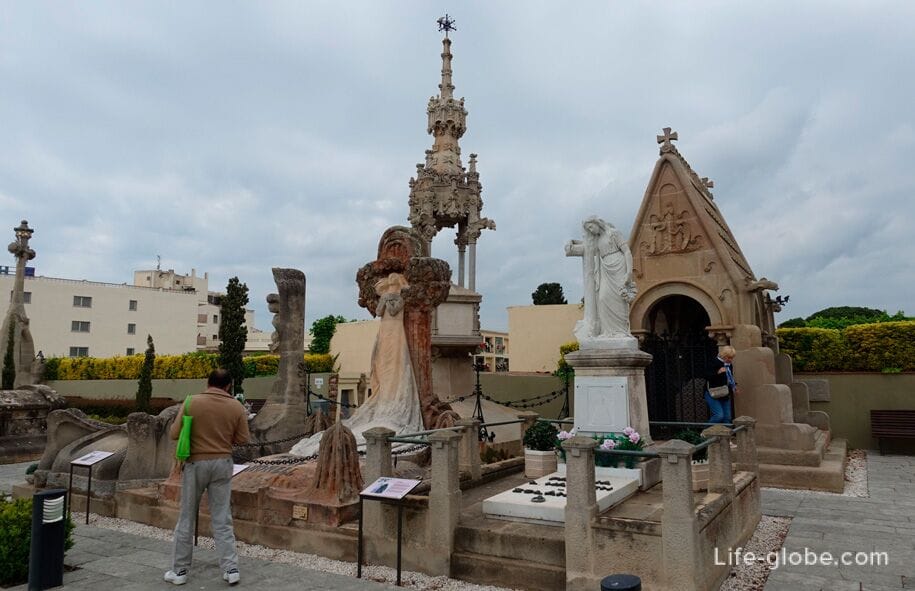
- house Garriga (Can Garriga), built in 1887, which now houses the Maritime Museum Kan-Garriga (entrance 4 Euro, reduced ticket 2 Euro) and tourist information center;
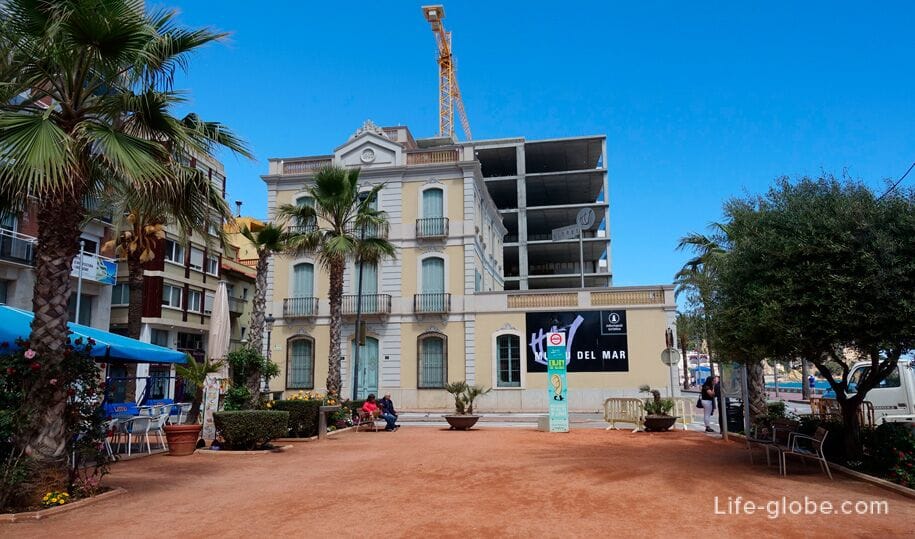
- the town hall, built in neoclassical style in 1872.
The architecture of the building is remarkable: decorative elements of terracotta coat of arms of Spain, a clock and a decorative bell tower made of wrought iron.
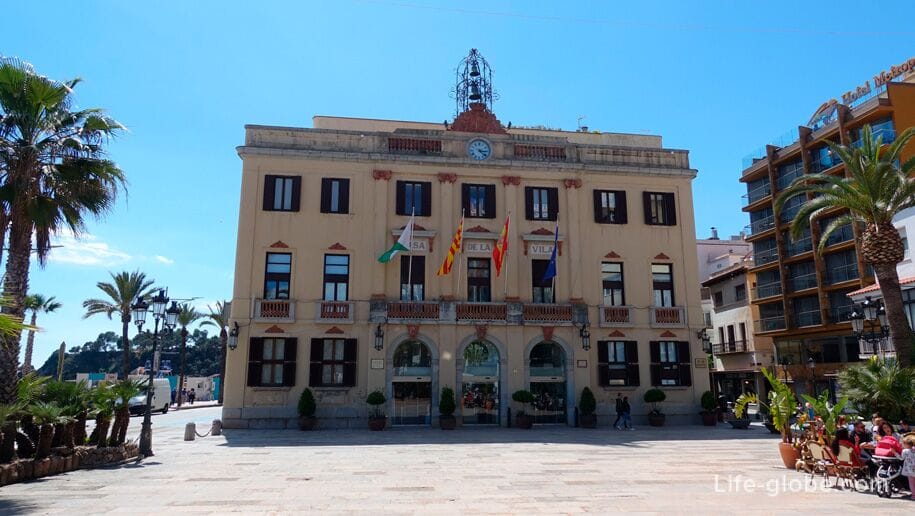
Garriga house and city hall are located on both sides of the Boulevard stands out, which is a small Park area, located along the Central part of the main promenade of Lloret de Mar.
The Park also stands out as a remarkable Canaletes fountain (Font de Canaletes), which is a landmark and an exact copy of the homonymous fountain located on Las Ramblas in Barcelona. The fountain was donated to Barcelona to Lloret de Mar in 1968. Read more about the Boulevard Verdaguer...

- house-Museum Font (Casa Font or Can Comadran), located in the heart of the old part of the city (the tour is held on record).
Kan Font, also known as Kal-condé or Kan-Piet, - apartment house, built in 1877 in modern style under the guidance of a native of the Town architect Felix Torras-and-Mataro-order-Nicolau Font-and-Maic.
The house includes a basement, ground floor, two floors and attic. In the center of the building is a staircase linking the rooms, located on different floors.
The facade of the building made in the neoclassical style, which enjoyed great popularity during the period of construction of the house.
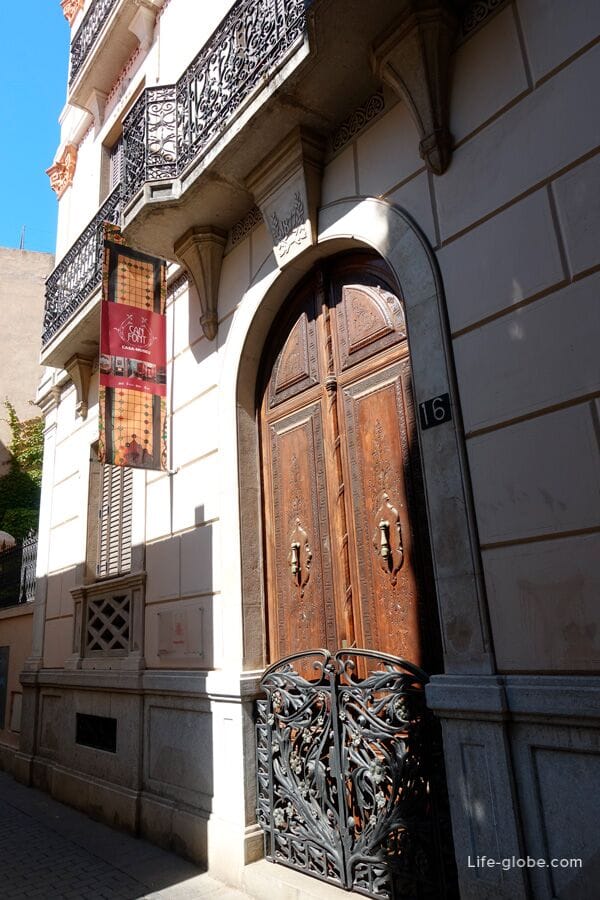
The Church of Saint Roman or the Church of San Roma is one of the most famous buildings of Lloret, located in the city centre, at plaça de l Església (Plaça de l església).
The original Church was built in Gothic style with elements of fortification from 1509 to 1522 year. Subsequently, in the 16th - 18th centuries, were erected and other parts of the building, including in a modernist style, in particular, outbuildings, side chapels, frescoes, saltany the image of the main altar.
Among the works of modern art, it should be noted stone sculpture of the virgin of Loreto and the wooden sculpture of Christ made by the sculptor Monjo.
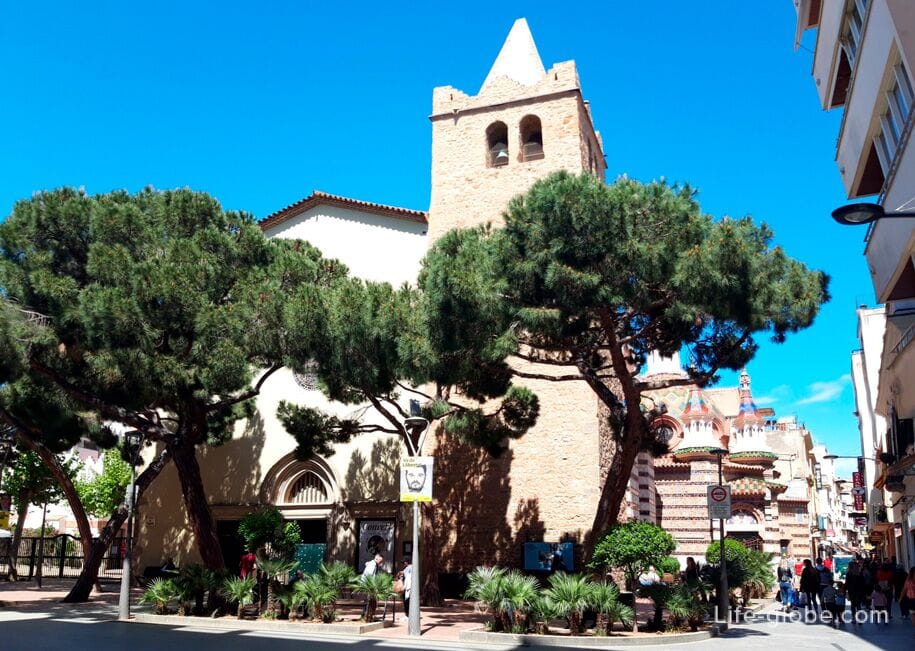
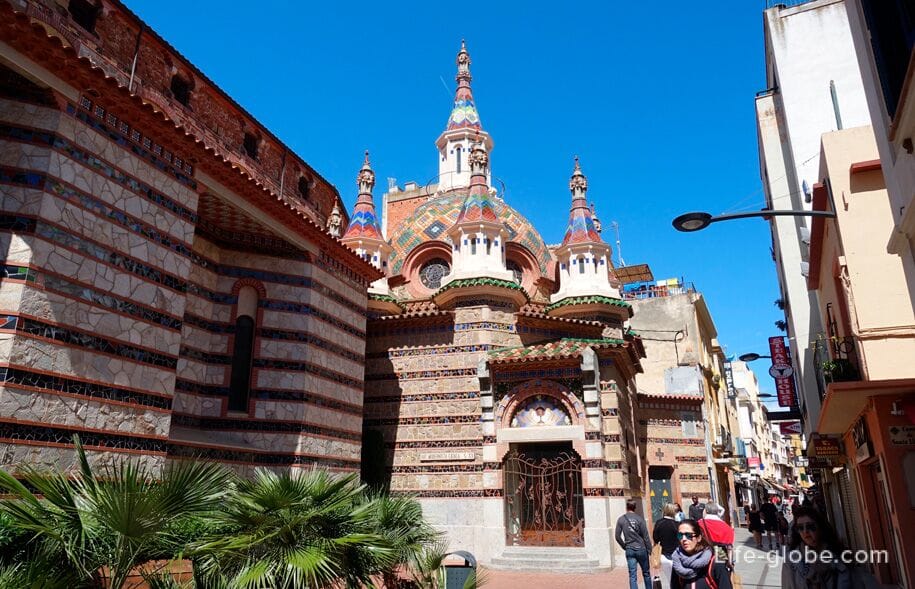
A small chapel, originally a 15th-century building in the centre of Lloret de Mar, Carrer de l'hospital Vell, 16.
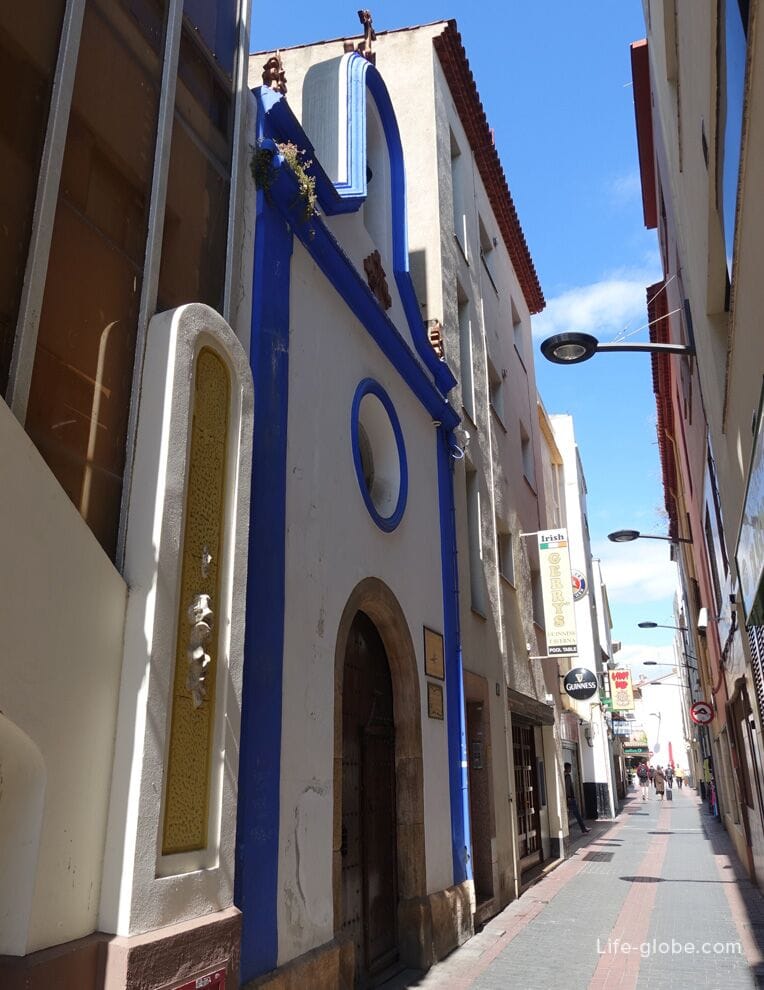
House located in the city centre, on Carrer d Agustí Cabañas, 3, remarkable decorated with relief moldings and door frame with a three-center arch with simple reliefs.
The Windows of the first and second floor also have a form trehtsentrovye arches, but on the first floor they are double, and the second with a balcony. Each of the rectangular Windows of the upper floor is decorated with three small columns. On the roof of the building subsequently was built a new floor.

The first mention of the chapel of Santa Cristina or Santa Christina refers to 1376.
The temple, which survived until our days, was built in the late 18th century in neoclassical style. The Church is decorated with marble altar, made in Italy, as well as an interesting collection of miniatures of the ships.
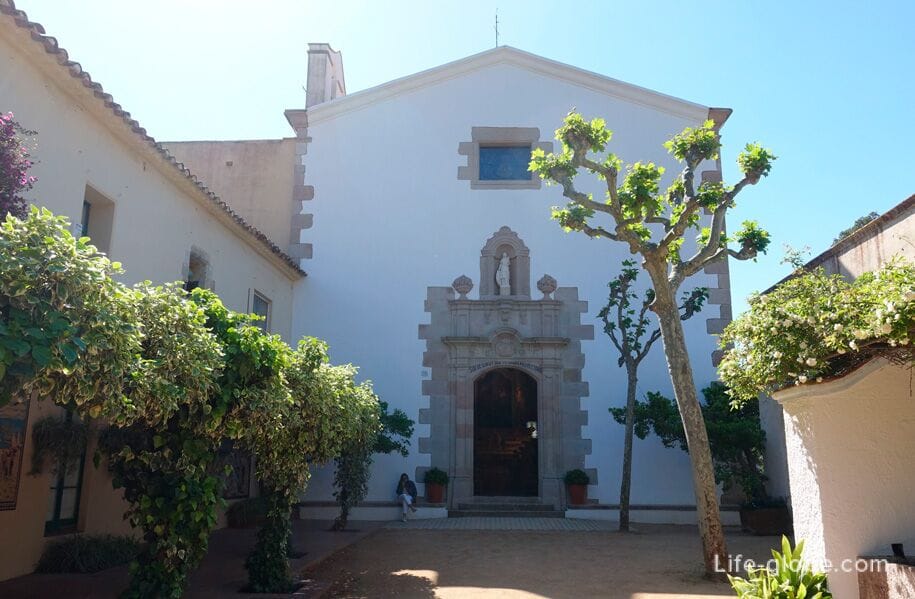
Near chapel of Santa Christina is located:
- observation deck with panoramic views of the coast of Lloret de Mar;
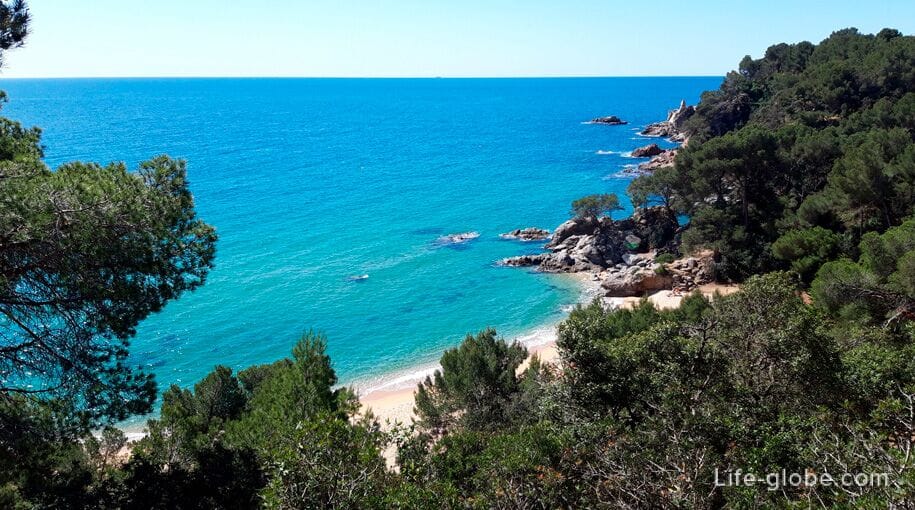
- a sculpture representing four columns on a pedestal, symbolizing the four stripes of the Catalan flag (Obreria de Santa Cristina);
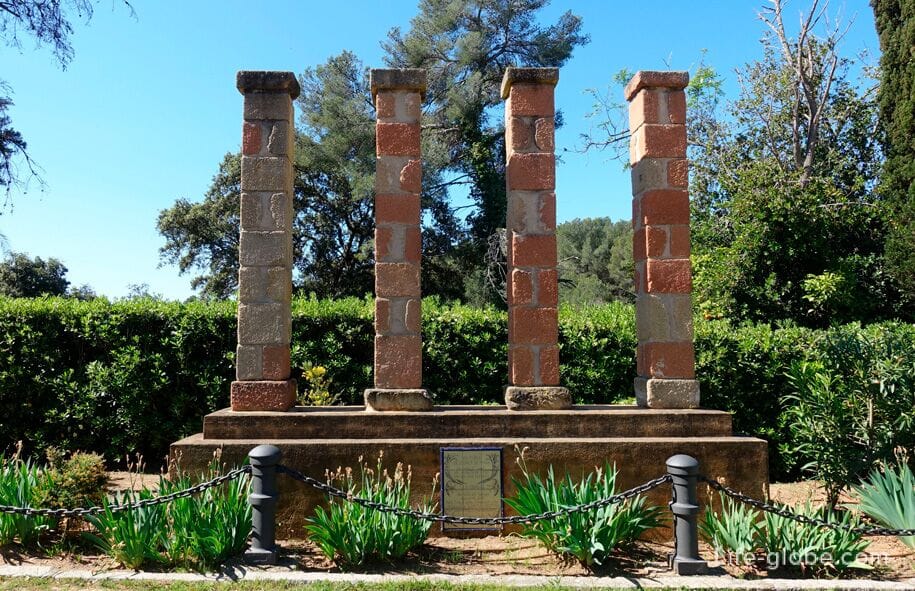
- a sculpture dedicated to the workers of Santa Christina in the girls performing the dance movements of the traditional dance with "albarradas" (A l obrera de Santa Cristina).
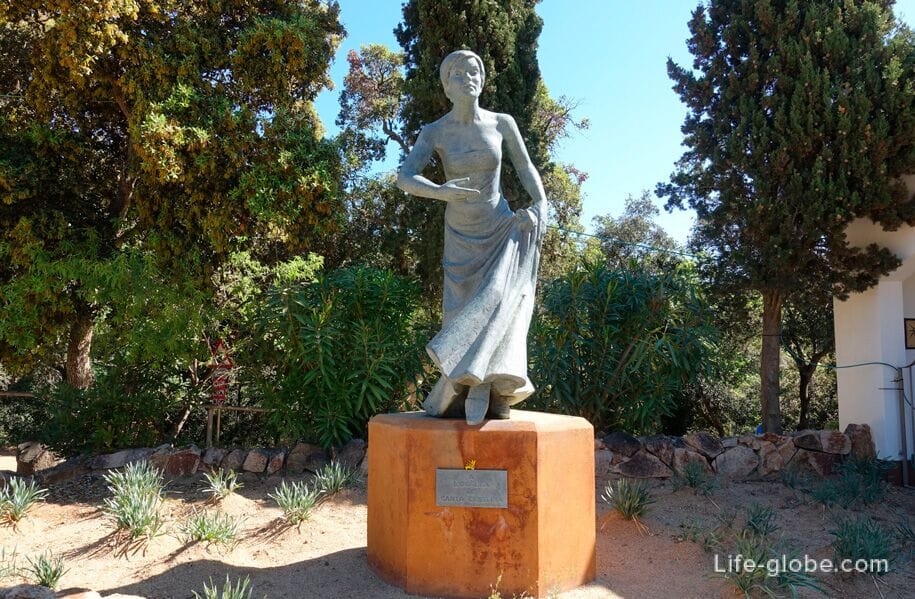
The Church of Santa Christina is located on a hill near the beaches of Santa Cristina and Treumal. Read more about the beaches and the chapel.
"Mas" (traditional Catalan detached farm house) Kan Saragossa is one of the oldest houses of the city (about 1317), which, as a result of restructuring in the style of modernism in the 19th century, turned into a summer residence.
In 1954 the house was converted into a hotel.
Currently the building houses the permanent archaeological exhibition, dedicated to the Iberians, as well as an extensive collection of Joan Llaverias.
The cost of entry is € 3, reduced ticket - € 1.50.
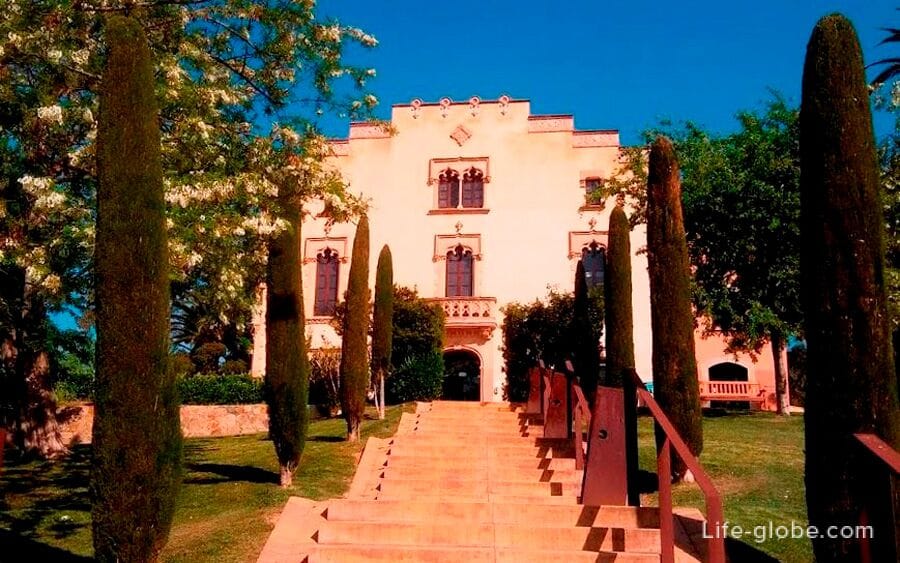
The archaeological site of settlement in Puits de will Castellet Dating from the 3rd century BC, is located in 2 kilometers from the center of Lloret.
The settlement was enclosed by a wall with protective towers, has lived in this place from 250 to 210 BC
The excavations are open to the public during the summer months, entrance fee.
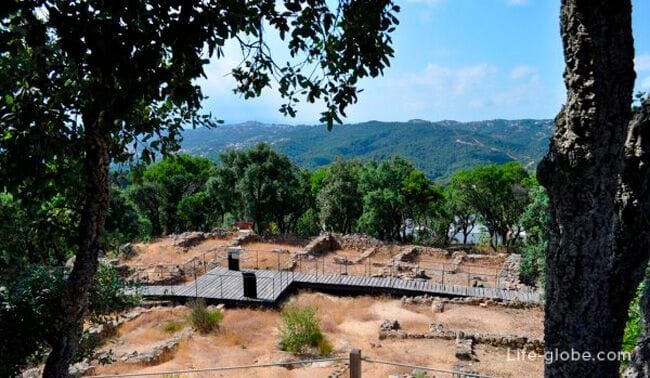
The chapel, located 2.5 kilometers from the center of the city, was the first parish Church of Lloret since its consecration in the year 1079 until the year 1522.
The architecture of the Shrine is remarkable for its bell tower in Romanesque style frescoes Calandria.
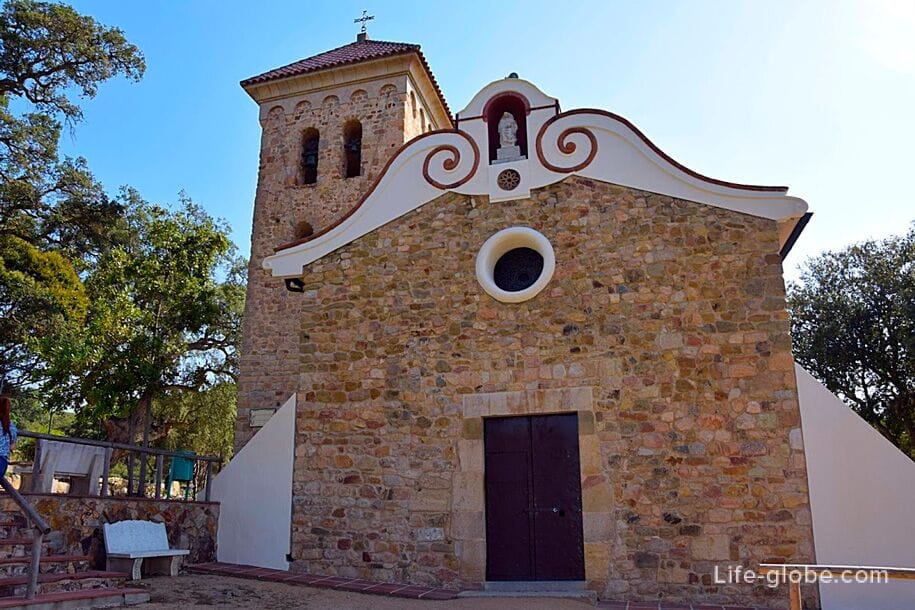
The majestic building of the former Benedictine monastery (10th century), located almost 7 kilometres from the centre of Lloret, now is a masterpiece of historical heritage.
There is a small chapel "virgin Fertile" (Mare de Déu de Gràcia), erected by order of Nicolau Font and Maic, one of the "Indianos", which acquired the land and paid for the restoration and construction of new buildings and sculptures, among which are the Cross and the angel. In honor of Nicolau in 1911, the sanctuary has installed his statue.
Currently, this is a private building, where the 5-star Sant Pere Del Bosc offers an outdoor pool with sea water, Spa, free Wi-Fi and a restaurant.
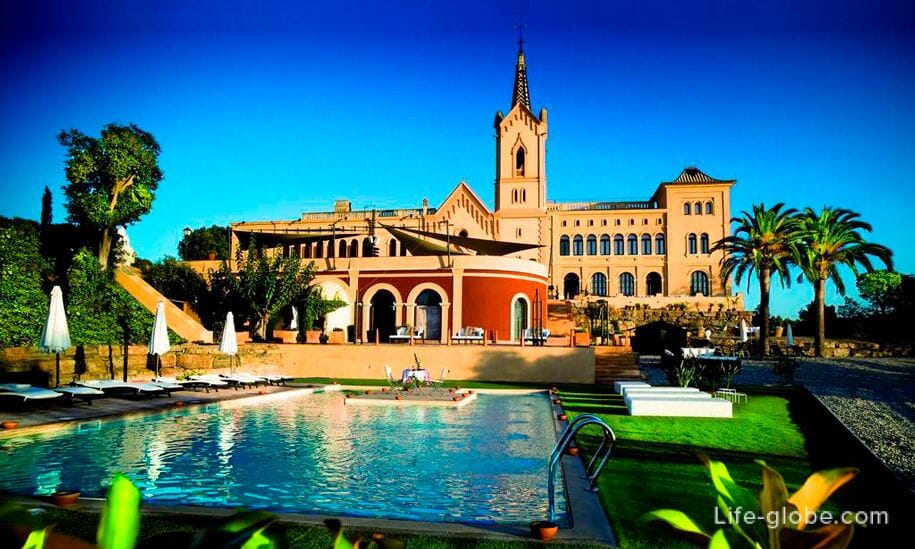
For the purposes of entertainment in Lloret de Mar you can visit thePark gnome (Gnomo Park), water Park Water world (Water World), small parks with attractions for children of Sold (Sould Park) and magic (Magic Park Lloret), Gran Casino Costa Brava (Costa Brava Gran Casino) or take a boat excursion to the neighboring town (Tossa de Mar, Blanes, Malgrat de Mar, Calella etc.). Info-cash "cruises" can be found on the Central promenade of Lloret de Mar.
